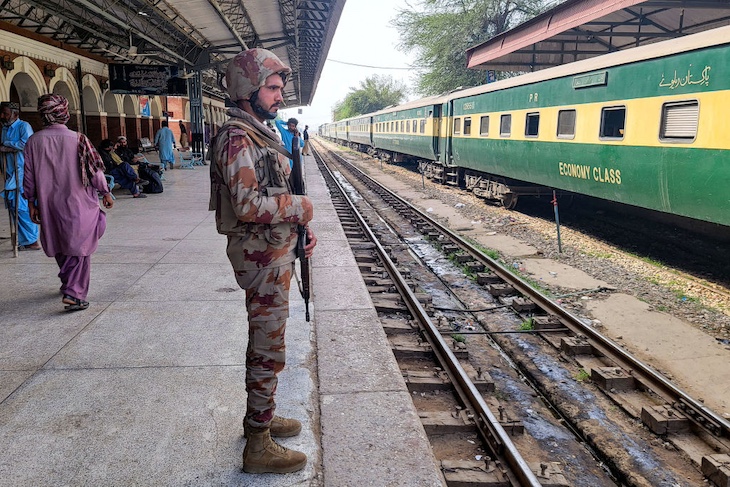The Jaffar Express, a train with over 400 people on board, was hijacked in Pakistan’s Balochistan province on Tuesday, leaving at least 21 passengers and 33 attackers dead. The separatist militia, the Baloch Liberation Army (BLA), claimed responsibility.
BLA militants bombed the railway track and then hurled rockets and opened gunfire on the train before getting on board and holding the passengers hostage at a remote and isolated junction. The group’s immediate demand was for its members to be released from prison, but Pakistan’s security forces launched an operation early on Wednesday, and ended the hijacking by the end of the day. The military claims all of the civilian casualties took place before the launch of its operation, which cannot be independently verified. The BLA claims it killed over 50 passengers in the raid.
In the first couple of months of this year alone, the BLA has launched a murderous attack on bus passengers, raided a market, bombed a coach, and killed dozens of security personnel in multiple attacks across Balochistan, in the west of the country. Last year, the BLA killed at least 32 after bombing a railway station in Balochistan’s capital Quetta, massacred over 50 people in coordinated raids across the province in August, kidnapped picnickers from Harnai town, and launched attacks on a naval base and the country’s most high-profile port in Gwadar.
The BLA has also frequently targeted Chinese workers and investment in the province, much of which is connected to the $62 billion China Pakistan Economic Corridor (CPEC). In October, the BLA killed two Chinese workers in a bombing outside Karachi airport.
The BLA, which wants an independent Balochistan, sees China as a coloniser in the province, along with the state and citizens of Pakistan. The outfit has murdered Punjabi civilians, with recent massacres of bus passengers, labourers and barbers. Many people in Pakistan are sympathetic towards the Baloch people, who have long been denied their region’s rich resources and been abused by the Pakistan military. But the frequency and barbarity of the BLA’s attacks has seen support for the group dwindle.
The total number of militant attacks in Pakistan has grown massively in recent years. Last year was the deadliest in a decade, with 444 reported attacks and over 1,000 dead. It’s not just the BLA which has been responsible for the rising violence. It has been joined by the Tehrik-e-Taliban Pakistan (TTP) in the killing.
The TTP and BLA have worked in tandem across Balochistan. They have found common enemies in both Islamabad and Beijing, and have exchanged personnel, strategies and topographical knowledge. They have even both taken a share of the billions of military equipment left in Afghanistan by the US in 2021. Both groups represent a growing threat to Islamabad.
The Jaffar Express hijacking does not come as a surprise. The BLA has been plotting a major hijacking for a while now. In 2020, the group attempted to take over the Karachi Stock Exchange, but it was foiled by the Pakistani security services. But the train hijacking does show that the BLA no longer wants to work in the shadows. Its leaders, spearheaded by Bashir Zaib, want to be in the public eye.
The BLA is helped by the fact that it has no shortage of new recruits. Young Baloch men are increasingly likely to take up arms against the Pakistani state because the Pakistani state continues to abuse the Baloch people. While the army effectively controls the entire country, in Balochistan it is particularly brutal. There is no political freedom and the Baloch people are at the mercy of local security officials.
For the Pakistan army, the scale of the Jaffar Express hijacking doesn’t just highlight the country’s growing security crisis. It is a direct result of its autocratic stranglehold over Balochistan. While the Baloch are increasingly taking up arms, the Pakistan military would undercut the BLA’s strength if it allowed non-violent political movements in the region to grow.







Comments